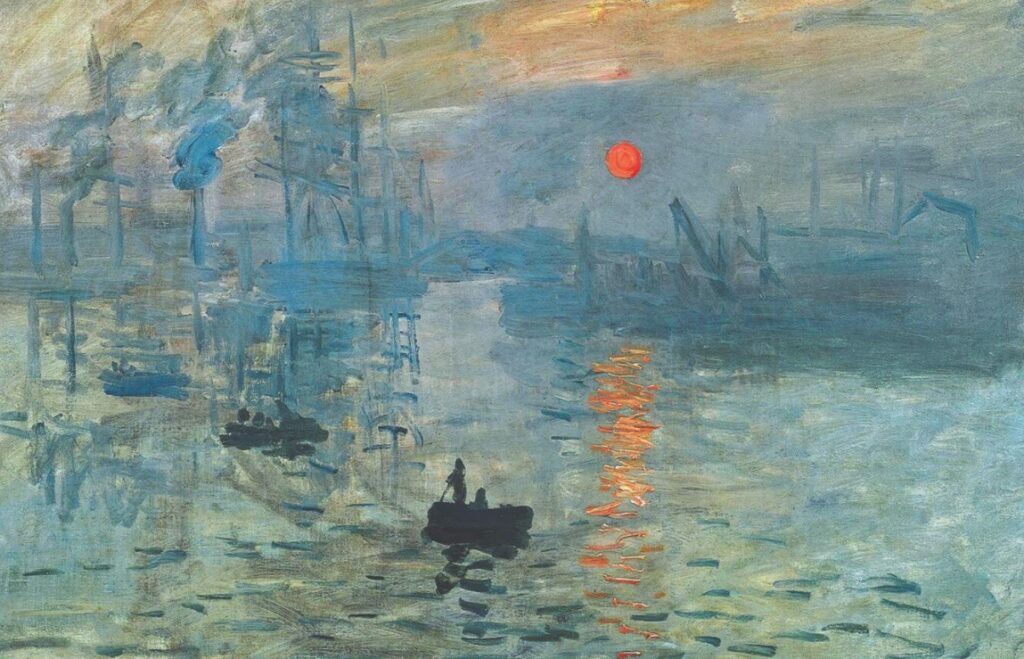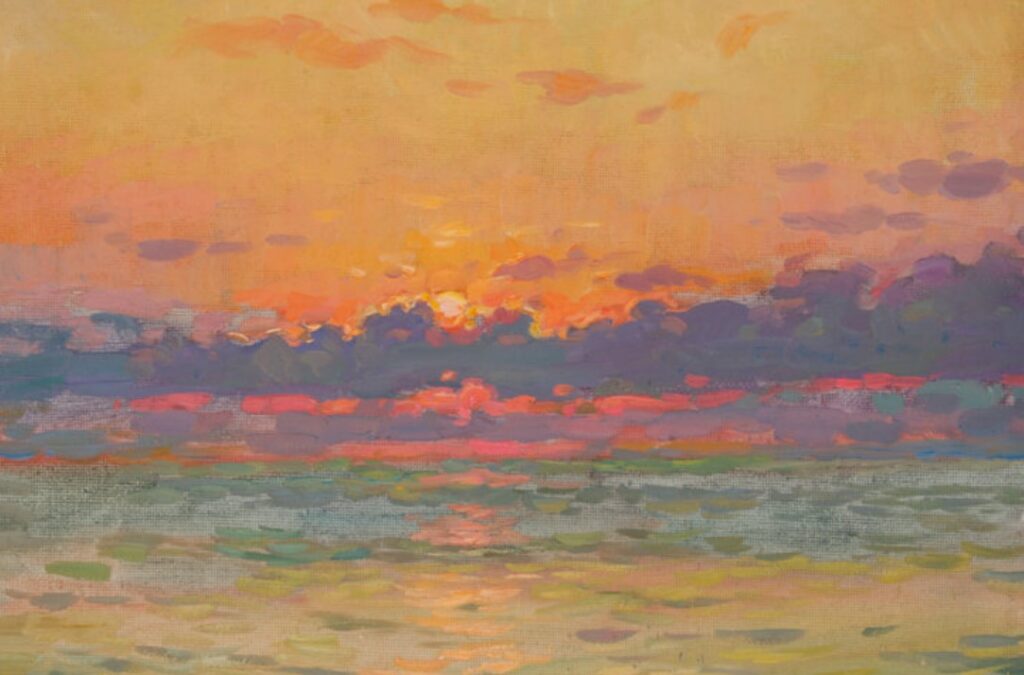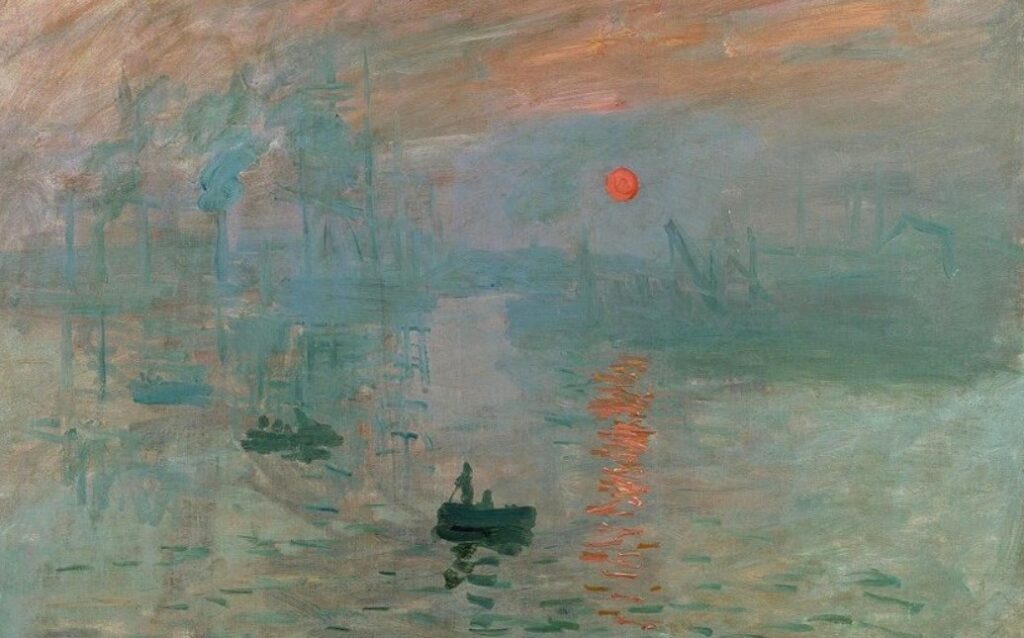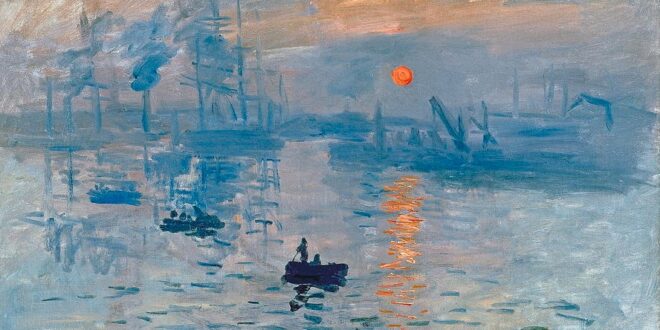When we talk about the greatest modern paintings that marked the nineteenth century, then one that we can by no means skip is the painting Impression, Sunrise painted by Claude Monet. This painting is still celebrated today as an essential symbol of the Impressionist movement, because it led to its emergence and completely reversed the painting style of that period. This style is considered the most popular style of modern art and has encouraged so many painters of that era to create phenomenal works of art that differed from anything created so far, and which still live on thanks to their magnificence. And it all started with Monet and his Sunrise painting.
Impression, Sunlight is a work painted by Claude Monet in 1873 and which illustrated the view of the port of Le Havre, the hometown of Claude Monet. It was first published at the so-called “Impressionist Exhibition”, and today it is exhibited at the Musée Marmottan Monet in Paris. The very name of this painting was the inspiration for the name of the entire Impressionist movement, so today it is considered its trademark and main symbol. From this painting everything started and led to a complete turning point in the painting of that time. Monet’s Impression, Sunlight painting is considered one of his most poetic expressions, as it represents not only a landscape, but much more than that. This painting was his contribution to the revitalization of France at that time, which was much needed after the Franco-Prussian War.
What makes this painting so special?

For the first time, the painting did not depict the landscape as such, but its goal was to convey the emotions evoked by that landscape. The works of the Impressionist movement conveyed the painter’s individual perception of nature and were their main motif. Impression, Sunrise conveyed a multitude of feelings and allowed everyone who looked at it to feel part of the emotion that Monet felt at the time of its creation, which was pretty much revolutionary.
With this work of art (and also with many others), Monet tried to master the plein air painting that allowed him to convey the instantaneous effects of sunlight, which would not have been possible in the studio.
What did the critics of the time have to say about Impression, Sunrise?

The first comments about Monet’s revolutionary work of art did not indicate that Impression, Sunrise would become so popular and loved and that it would lead to the emergence of a completely new art movement. On the contrary, the first comments of critics about Monet’s painting were mocking and belittling his work. Art critic Louis Leroy wrote a review of this work in which he ridiculed Monet’s idea, and called it the “Exhibition of the Impressionists”. Little did he know that the title of his review, along with the title of painting, would become the inspiration for the name of an entire art movement, of which Claude Monet was the creator.
What further contributed to these sharp criticisms was the fact that almost no one created such works of art. In that period, in addition to Monet, there were only a few painters who created Impressionist paintings: Camille Pizarro and Alfren Sisley, and Auguste Renoir kept this motif in the mid-nineteenth century.
What is the message of the painting Impression, Sunrise by Claude Monet?

Before we move on to the interpretation of the painting itself, it is important to note that Mone, just before its creation, still painted scenes of industrial and urban life. This work was the first to depict the immediacy of the execution and only one moment that the artist perceived and transferred to his canvas. The key elements of the painting itself are the bright colors of the sun and its clear shape. It is surrounded by a pale blue color that further emphasizes the sun due to the complementarity of the colors. Like most paintings of the Impressionist period, Impression, Sunrise is dramatic and effective.
Although it conveys the moment of sunrise, Monet’s painting hides much more than that. There were several cultural influences of that time that inspired Monet, and which consequently permeated his painting. First of all, at that time the sunrise and the French port of Le Havre were a frequent motif of a large number of painters, so it sounds quite logical that Monet also chose them. However, it is important to note that Claude Monet actually painted his hometown in the period after the Franco-Prussian War which left a big mark on France. Many believe that this is why the emotions conveyed by the painting are so effective, clear and anyone who observes the painting can feel them.
The Franco-Prussian War lasted for a year (from 1870 to 1871) and resulted in the defeat of the Second French Empire, marking the end of Napoleon III’s empire. Although the war was short-lived, France’s losses were great and long felt – not only in terms of territory, but also in terms of its impact on society and morale. This war was followed by a period of revitalization of France, where individuals wanted to participate and regain to their country what it had partially lost. One of them was Monet, who approached this mission with great zeal which he also transferred to his works of art, including Impression, Sunrise.
While many would not think that heavy machinery and smog represent something positive, it is true that this scene represented the hope for the prosperity of the future that Monet felt and conveyed on the screen at the time.
It is no secret that centuries before and centuries after Monet’s painting sunrise and sunset were an inspiration to many painters. There is something magical and mystical that lurks in these moments and that each individual painter tries to present in a different and special way. This seems to be one of the motives that will never cease to be an inspiration and a source of admiration. In case you love sunset and sunrise paintings and are trying to figure out which would be ideal for your home check out the offer at https://www.meisterdrucke.us/category/Sunrise-and-Sunset.html and find the perfect one for yourself.
 Imagup General Magazine 2024
Imagup General Magazine 2024



